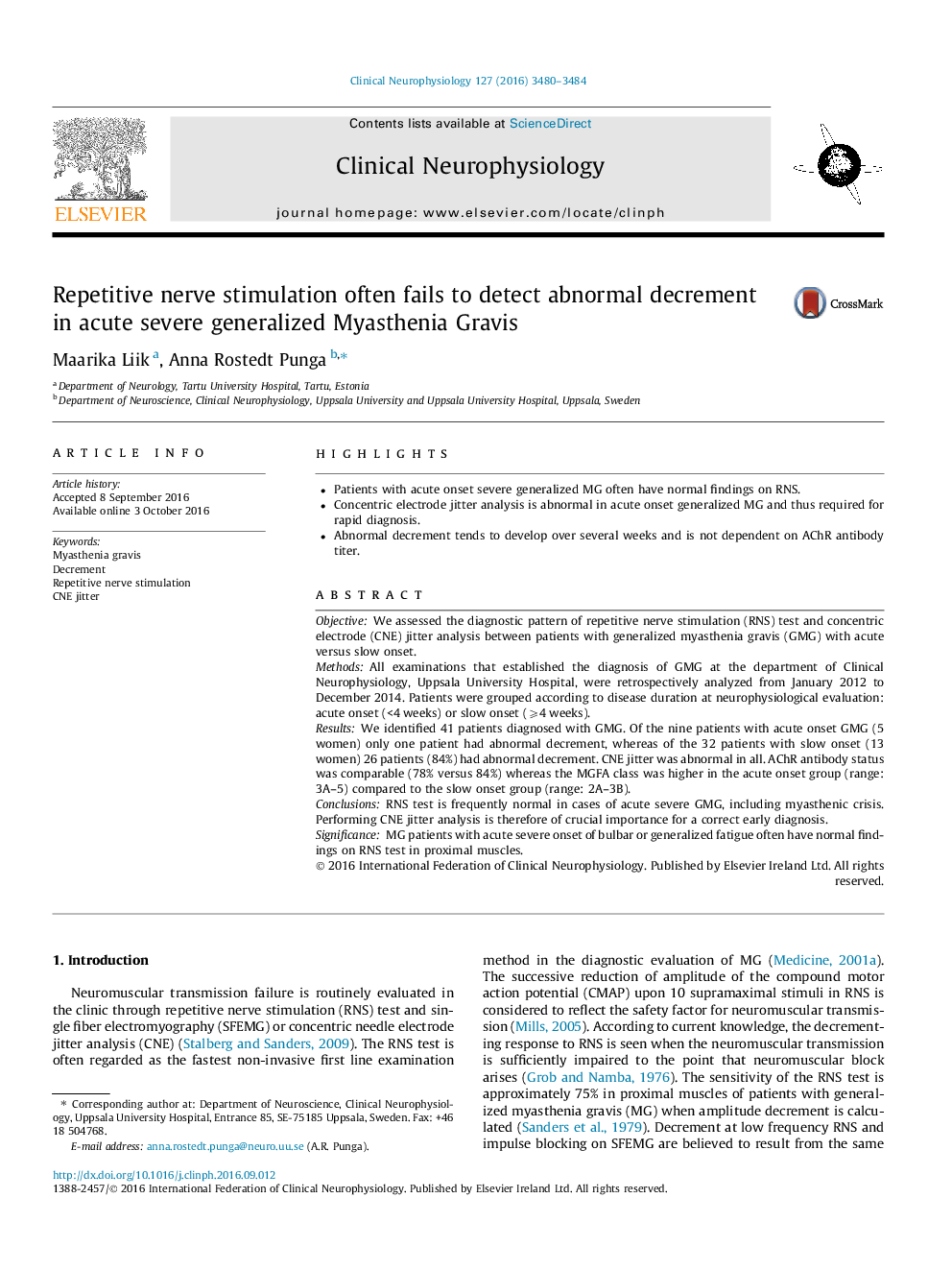| Article ID | Journal | Published Year | Pages | File Type |
|---|---|---|---|---|
| 5627571 | Clinical Neurophysiology | 2016 | 5 Pages |
â¢Patients with acute onset severe generalized MG often have normal findings on RNS.â¢Concentric electrode jitter analysis is abnormal in acute onset generalized MG and thus required for rapid diagnosis.â¢Abnormal decrement tends to develop over several weeks and is not dependent on AChR antibody titer.
ObjectiveWe assessed the diagnostic pattern of repetitive nerve stimulation (RNS) test and concentric electrode (CNE) jitter analysis between patients with generalized myasthenia gravis (GMG) with acute versus slow onset.MethodsAll examinations that established the diagnosis of GMG at the department of Clinical Neurophysiology, Uppsala University Hospital, were retrospectively analyzed from January 2012 to December 2014. Patients were grouped according to disease duration at neurophysiological evaluation: acute onset (<4 weeks) or slow onset (⩾4 weeks).ResultsWe identified 41 patients diagnosed with GMG. Of the nine patients with acute onset GMG (5 women) only one patient had abnormal decrement, whereas of the 32 patients with slow onset (13 women) 26 patients (84%) had abnormal decrement. CNE jitter was abnormal in all. AChR antibody status was comparable (78% versus 84%) whereas the MGFA class was higher in the acute onset group (range: 3A-5) compared to the slow onset group (range: 2A-3B).ConclusionsRNS test is frequently normal in cases of acute severe GMG, including myasthenic crisis. Performing CNE jitter analysis is therefore of crucial importance for a correct early diagnosis.SignificanceMG patients with acute severe onset of bulbar or generalized fatigue often have normal findings on RNS test in proximal muscles.
